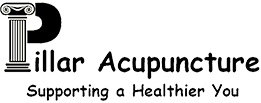What is TCM? TCM or Traditional Chinese Medicine is a style of traditional Asian medicine integrated with modern medicine. Chinese medicine has been in practice for over 5,000 years and includes herbal medicine, acupuncture, massage (Tui-Na), exercise (qigong, taichi etc.), and dietary education.
What is acupuncture? Acupuncture is a branch of traditional Chinese medicine that has been practiced for over 5,000 years. It is based on the theory that qi (pronounced “chee”) circulates through and around the body along pathways called channels or meridians. There are 12 main channels with branches connecting to the organs. Illness occurs when something blocks or unbalances your qi. Acupuncture is a way to unblock qi and to help re-balancing qi. The correction of imbalanced qi is accomplished through the stimulation of certain acupuncture points located throughout the body. Stimulation is often by the insertion of fine metallic needles into the skin and deeper tissues at these points. Acupuncture points can also be stimulated by hand (often called acupressure), by laser light, and by heat. Acupuncture is widely practiced in the US with an estimated 3.1 million Americans receiving treatments from acupuncture providers.
What education does an acupuncturist receive? Acupuncture training traditionally was handed down from masters to students. Some early acupuncturists in the U.S. were trained in this fashion. Beginning in the 1980’s acupuncture training programs began to be institution based and to be accredited in the same way that other health professional education programs have been in the U.S. Today, the Accreditation Commission for Acupuncture and Oriental Medicine is recognized by the U.S. Department of Education for accrediting Master (MAcOM) and Doctoral (DAOM) level educational programs.
Prerequisites for admission to an acupuncture program include three years of college credits with special emphasis on biology, chemistry, and psychology. Entrants will have either a bachelor’s or a higher degree. The master’s program is generally a four year track and the doctoral program is a two year track. Coursework is a combination of traditional acupuncture theory and practice in which the philosophical and energetic concepts of acupuncture along with study of biomedicine as conceptualized and taught in most medical schools. The integration of eastern and western medical practices along with in depth contemporary understanding of anatomy, physiology, health, diet, and nutrition provides a unique training to enhance human health.
What kind of license does an acupuncturist have? Once a student graduates, he/she is eligible to apply for national board examinations overseen by the National Certification Commission for Acupuncture and Oriental Medicine (NCCAOM). National board certification in acupuncture has been the mark of excellence in acupuncture since the inception of the Commission in 1982. In order to maintain NCCAOM certification, providers must perform continuing educational activities throughout their career. Coursework must be in specific areas of competency including core skills in acupuncture, CPR, ethics, and other courses approved by the Commission.
In addition to national certifications, a practitioner must obtain and maintain a license in the jurisdiction where they practice. State laws generally govern the licensing of acupuncture providers. The profession is overseen by a board comprised of providers and public members. In some states such as in Oregon, the profession is licensed by the state medical board. Currently, 43 states plus the District of Columbia require the passage of the NCCAOM examinations or NCCAOM certification as a prerequisite for licensure. State license is a baseline assurance of quality and safety of the practitioner.
What to expect on your first visit? At your first appointment, an acupuncturist will begin by asking you a series of questions about your current health care needs, your current and past medications, your habits and lifestyle, personal health history, and physical symptoms. They may also gather information about your health by observing various physical characteristics. Your acupuncturist may examine the color, shape, and coating of your tongue; feel the speed, quality, and strength of your pulse; or palpate areas of your body where you are experiencing pain and discomfort. This information will help them determine the most appropriate treatment for you.
Once they have formulated a treatment plan for you, the acupuncturist will place extremely fine flexible, sterile, single-use needles at specific acupuncture points on your body to access the qi that is blocked or not flowing right. Each points relates to certain health problems or body functions. When the needles are inserted, you may experience a sensation of tingling or warmth.
Does acupuncture hurt? In traditional acupuncture, needles are inserted at specific locations called acupoints in order to restore balance and healthy energy flow to the body. Needles are usually put in just deep enough into the skin to keep them from falling out. Acupuncture needles are much smaller than a hypodermic needle and the point is rounded, not sharp. They are so thin that several acupuncture needles can go into the middle of a hypodermic needle.
There is little sensitivity to the insertion of acupuncture needles. The acupuncturist may twirl the needles or apply heat or a weak electrical current to enhance the effects of the therapy. Sensations of pressure or tingling are common. Providers will ask their patients how they feel with the needling. It is of course important for acupuncture patients to inform their acupuncturist of any unusual pain or discomfort so that the practitioner can adjust or remove any needle application. In general the sensation of an acupuncture treatment is quite pleasant as endorphins are released and circulate throughout the body during a treatment session.
